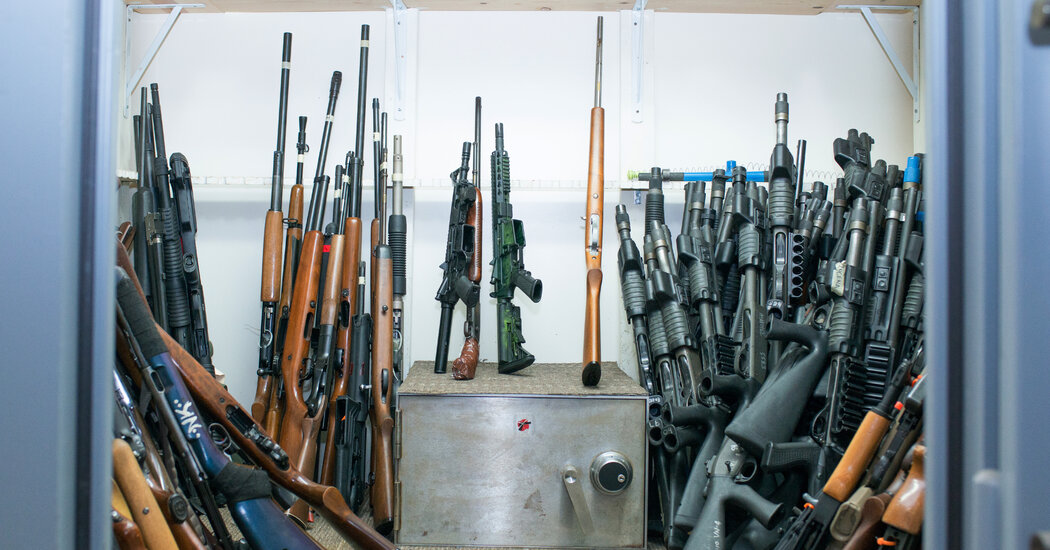Communities across the U.S. are fueling a secondary arms market by giving seized and surrendered guns to disposal services that destroy one part and resell the rest.
When Flint, Mich., announced in September that 68 assault weapons collected in a gun buyback would be incinerated, the city cited its policy of never reselling firearms.
“Gun violence continues to cause enormous grief and trauma,” said Mayor Sheldon Neeley. “I will not allow our city government to profit from our community’s pain by reselling weapons that can be turned against Flint residents.”
But Flint’s guns were not going to be melted down. Instead, they made their way to a private company that has collected millions of dollars taking firearms from police agencies, destroying a single piece of each weapon stamped with the serial number and selling the rest as nearly complete gun kits. Buyers online can easily replace what’s missing and reconstitute the weapon.
Hundreds of towns and cities have turned to a growing industry that offers to destroy guns used in crimes, surrendered in buybacks or replaced by police force upgrades. But these communities are in fact fueling a secondary arms market, where weapons slated for destruction are recycled into civilian hands, often with no background check required, according to interviews and a review of gun disposal contracts, patent records and online listings for firearms parts.



What’s the problem, exactly? The destruction services seem to make it clear in their contract whether they’re destroying the whole thing or just the serialized parts that actually constitute a firearm.
I would think the problem is apparent but - the voting public in these jurisdictions expects a reduction in the total guns available equal to the guns bought back. If some are resold as kits, even requiring additional serialized parts, that results in fewer total guns removed from circulation than if they were not resold. Presumably the kits are cheaper than a full gun, so the people buying them may not have bought them if they were more expensive.
Maybe, but that’s on whoever is requesting the destruction to literally just read the contract they’re agreeing to.
In terms of removing firearms from circulation, except for very common models (Glock, AR) almost nobody sells bare receivers. This means that parts kits typically aren’t going to builders to make them whole again, but used to replace parts on existing guns. It’s still removing one from circulation.
Perhaps but that’s providing parts to the secondary market is not the point of the program. It’s not a side benefit or even an acceptable side effect. It’s literally antithetical to the program’s intent.
If so, maybe the programs should be choosing the “destroy everything” option instead of “destroy the receiver and resell the parts”.